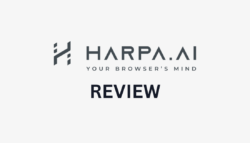
In the shifting world of artificial intelligence, one of the most profound transformations is occurring in how we search for and discover information. AI-driven platforms, especially generative AI models like OpenAI’s ChatGPT, Google’s Gemini, and Perplexity AI, are redefining what it means to be “searchable.” As these tools reshape search behavior, the ripple effects are undeniable for public relations and brand visibility.
In this new era, the traditional playbook of press releases, search engine optimization, and headline-driven media placements must evolve. PR professionals and brands alike need to rethink their strategies to ensure visibility in an AI-centric landscape. Here is how.
From Keyword Optimization to Contextual Relevance
SEO has long been rooted in keyword strategy, metadata, and backlinks. However, generative AI does not simply crawl and rank pages based on keyword density. It interprets context, synthesizes meaning, and produces nuanced answers based on vast volumes of content.
This means PR content must now be structured and contextualized in a way that AI models can interpret accurately. Structured data, clarity in messaging, and consistent narratives are now more essential than ever. Brands must focus less on what keywords users type and more on the questions they ask and how AI will understand and respond to those queries.
As Google’s generative search begins to roll out more widely, brands that do not prioritize relevance and semantic depth may find themselves excluded from top-level responses. Gartner predicts a 25% decline in search traffic by 2026 due to AI chatbots; this monumental shift will require a significant shift in SEO strategy.
The Evolution of Thought Leadership
Generative AI often pulls from expert commentary and original insights to generate responses. That means thought leadership is not just good PR; it is foundational to being included in AI outputs. Executives who publish authoritative, well-researched insights can increase the chances that their perspectives are synthesized in AI-generated content.
This creates an opportunity for PR to reposition thought leaders not just as media sources, but as strategic content contributors. Articles, interviews, and commentary pieces must be crafted to answer real-world questions that users might ask AI tools.
Platforms like Unite.AI have emerged as valuable ecosystems where AI and technology leaders can establish relevance and contribute to the broader discourse. These contributions, when properly indexed, enhance discoverability and credibility. The World Economic Forum also emphasizes that building public trust and expertise in AI is essential for leaders navigating the future of work.
Earned Media in the Age of AI
Earned media still matters, but how it’s used must shift. Traditionally, a successful media hit would lead to a spike in visibility via search engines and social amplification. Now, the value of earned media lies in its ability to train and inform AI models.
High-authority publications are a key data source for generative models. Coverage in respected outlets such as MIT Technology Review, The Verge, or Wired not only lends credibility but can influence the output of AI-generated answers.
To maximize this value, PR teams should emphasize accurate, quotable insights within earned coverage. Soundbites, statistics, and original data will have a longer shelf life in AI-driven environments where models rely on trusted inputs. According to a study detailed in Times Higher Education, articles attributed to human authors were perceived as more credible than those attributed to AI authors, even when the content was identical. This suggests that the perceived authority of the author can influence the credibility of the content.
Structuring Content for AI Readability
Generative AI thrives on structured, factual, and accessible information. Content must be machine-readable: clear headlines, subheadings, bullet points, and concise paragraphs all matter more than ever. Ambiguous language, jargon, or buried ledes risk being overlooked.
More importantly, brands should consider schema markup and other semantic SEO tactics that help machines understand content relationships. Tools like Schema.org provide valuable frameworks for enhancing AI comprehension. A recent guide from ThinkDMG outlines how structured data and content clarity contribute directly to generative search inclusion.
PR professionals must now think like information architects, structuring every release, op/ed, or byline for both human and machine consumption.
PR Measurement Is About to Change Again
As AI reshapes the digital landscape, measurement in PR must also evolve. Success can no longer be gauged solely by impressions or clicks. The question becomes: Is our brand part of the generative conversation?
New metrics must emerge, focusing on AI visibility. Are brand mentions appearing in generative answers? Are executives being cited by AI tools? Are our media placements contributing to AI training datasets?
Tools and analytics platforms will need to adapt. Forward-looking firms are already investing in AI tracking tools to determine where and how brand content appears in large language model outputs. This is not future-state thinking; it’s already underway. According to Forrester, AI visibility will become a core KPI for marketing leaders in 2025.
Conclusion: The PR Playbook for the Generative Era
The AI-driven search revolution is not a trend, it is a seismic shift. For brands, this means that staying visible requires a new level of strategic intent. Structured content, proactive thought leadership, smart earned media, and machine-readable formats are no longer optional; they are critical to success.
Public relations professionals stand at the intersection of storytelling and discoverability. Those who embrace this new generative search environment will not only preserve their brand’s relevance but expand its influence in ways that were previously unimaginable. To thrive, PR teams must become fluent in AI technologies, adapting messaging to fit evolving algorithms while maintaining authenticity. The brands that invest in understanding AI’s nuances and craft content tailored for generative search will emerge as trusted voices in their industries. Ultimately, success in this era hinges on agility, innovation, and a commitment to meaningful engagement within an AI-driven landscape.
Collaboration across teams, including marketing, data analytics, and technology, is essential to develop cohesive strategies that align with AI search trends. Continuous learning and experimentation will help PR professionals stay ahead of rapid changes. As generative AI becomes more integrated into everyday information consumption, the ability to influence AI’s outputs by shaping high-quality, reliable content will define competitive advantage. Embracing these changes will empower brands to not only navigate but also lead in the future of digital communication.
The post AI Search Is Reshaping PR: Here’s How Brands Stay Visible in a Generative World appeared first on Unite.AI.



